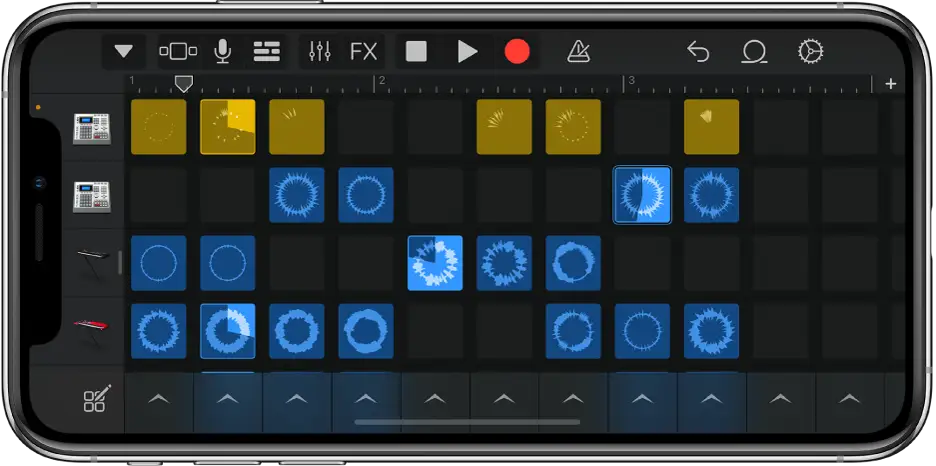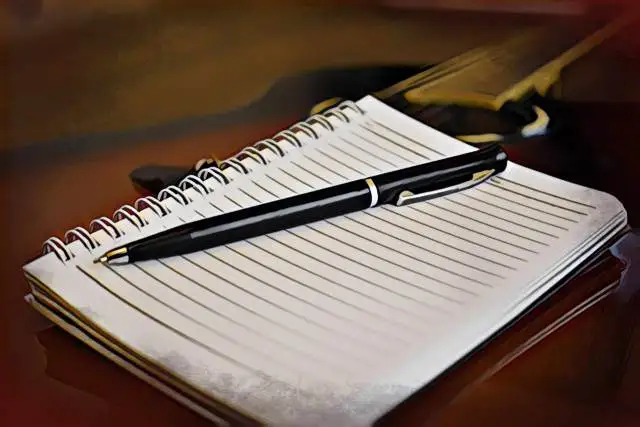Learning how to write songs without an instrument can be exciting. It offers a unique style of artistic expression that differs from traditional methods, as you're able to focus entirely on the melody, lyrics, and structure of the song without being tied to any specific instrument.
And it's not as unusual as it might seem. In fact, many iconic songs have been crafted this way. For example, Paul McCartney dreamt the melody for the hit Beatles song "Yesterday" and hummed it for days before ever writing the music.
In this guide, we're going to explore some techniques for writing a song without an instrument, from must-have tools to unique strategies, all of which should hopefully open up a new world of songwriting for you!
Advantages of Writing Without Instruments
While writing music without an instrument can be a challenge, it also presents unique opportunities that can enhance your songwriting skills and creativity. The challenge lies in not having a physical instrument to guide your melody or chord progression, which can feel disorienting at first.
However, it's great for thinking outside the box and focusing more on the core elements of your song.
Here are some benefits of writing music without an instrument:
- Without the constraints of an instrument, you're free to experiment with different melodies and rhythms that you might not have considered otherwise.
- It forces you to prioritize the melody and lyrics , ensuring they stand strong on their own.
- You can write anywhere and anytime without needing to have an instrument on hand.
- It helps you develop a stronger understanding of music theory and composition as you rely more on your imagination.
- By stepping away from traditional chord progressions and patterns, you might discover a more distinctive and original sound .
My Go-To Tools for Writing Songs Without Instruments

Before we look at tips and techniques on how to write a song without an instrument, let's first explore some tools I use.
My iPhone and GarageBand
GarageBand is a fantastic, user-friendly app that lets you create music on the go. Best of all, it's totally free for iPhone users! It provides a variety of virtual instruments and loops, making it easy to sketch out ideas quickly. On the other hand, if you're an Android user, FL Studio Mobile is a great alternative.
Laptop or Desktop
A reliable laptop or desktop with decent processing power is essential for running a DAW (Digital Audio Workstation) smoothly. With decent RAM and storage, you'll be able to handle multiple tracks, effects, and plugins without experiencing lag or crashes.
A DAW
For songwriting, I'm a big fan of Ableton Live , as it's versatile, intuitive, and excellent for arranging. The Session View offers excellent looping functionality, which makes it easy to experiment with different sounds and arrangements on the fly.
Samples and Sound Libraries
Having a diverse collection of samples and sound libraries can make your songwriting more flexible. I'll get more into some of my favorites in a bit.
Headphones
I'm a big fan of Beyerdynamic DT770s, which offer excellent sound quality and comfort for long listening sessions. Plus, I love being able to write music with greater privacy, especially if it's late at night, and I don't want to disturb anyone.
Audio Interface
If you're recording your song to your computer, you'll need an audio interface, which is a device that converts analog signals (like your voice) into digital signals that your computer can process. I personally use a UAD Apollo Twin , which has killer preamps and low-latency recording capabilities. However, any good audio interface will do.
Microphone
Of course, you can't record vocals without a microphone! There are two main types of mics to choose from: dynamic and condenser mics. Dynamic mics are durable and great for recording in untreated environments, while condenser mics are more sensitive and ideal for high-fidelity, detailed recordings. I’m a big fan of the Shure SM7B for home recording! It's a super versatile and relatively affordable mic that sounds just as incredible as any mic you'd pay thousands of dollars for.
How I Write Songs Without Instruments
Now we're cooking!
Once you have the right tools in your arsenal, it's time to try and write a song. Here's how my typical songwriting process goes when I try to write a song without an instrument:
Recording Ideas to My Phone
One of the greatest advantages of modern technology is that we always have our phones with us, so why not make use of their recording capabilities? Whether you're struck by inspiration while on a walk or humming a melody during your commute, your phone can be a powerful tool for capturing your next hit on the fly.
There are plenty of great apps available for laying down ideas quickly. As I mentioned earlier, GarageBand on the iPhone is a fantastic app that I've been using for years. It's great for creating full-fledged musical ideas with virtual instruments, loops, and multitrack recording. In minutes, you flesh out a simple concept into a more developed piece.
Of course, if you don't want to dive into a full music production app, you can also record to your phone's voice memos app, which can be incredibly useful (I probably have around a thousand voice memos on my phone of random melody and song ideas).
I often find myself doing this when I want to remember ideas for later, especially if I'm driving or on the go and can't sit down to record properly. It's a great way to ensure that no spark of inspiration is lost.
Recording to My Computer
A laptop is one of the best music-making tools you can have right now. Compared to a phone, you get greater flexibility and power, which you need for creating professional-quality music.
To get the most out of your laptop, try to get hold of a computer with enough processing power and memory to run a modern DAW smoothly. There's nothing worse for your workflow than a computer crashing every five minutes.
Here are some DAWs worth looking at:
- Ableton Live: Super intuitive interface and powerful live looping capabilities.
- Logic Pro X: A favorite among Mac users. Basically GarageBand on steroids.
- FL Studio: Tons of great built-in plugins and solid MIDI capabilities
- Pro Tools: Though it may not be the most user-friendly, it's still the industry standard for recording and mixing.
Learning how to use a DAW can seem difficult at first, but luckily, there are plenty of easy resources available to help you get started. YouTube offers thousands of tutorials that cover everything from basic setup to advanced production techniques. I recommend doing some exploring!
Using VSTs and Samples
These days, it feels like we have infinite musical tools at our disposal. It's easier than ever to create polished tracks without instruments.
The beauty of using samples and chord packs is the flexibility they offer. You can chop, rearrange, and manipulate your loops and samples in whatever way you please.
If you don't know where to start, here are some of my favorite options for samples, MIDI packs, and VSTs:
Samples:
MIDI Packs:
VSTs:
Using My Voice
Technically, the voice is an instrument, and there are countless ways you can use it to write music. Whether it's layering harmonies to create a rich, full sound with chords, you can write a melody over to beatboxing, which you can use to lay down a rhythm from which you can build.
One great example of using the voice as the primary instrument is in acapella tracks.
Groups like Pentatonix use nothing but the human voice to create full, lush production of popular songs.
We also have classic tracks like Bobby McFerrin's "Don't Worry, Be Happy," which shows how powerful and versatile the human voice can be.
If you're recording your voice into your DAW, you can also add effects to your vocals to transform them into something entirely different. For instance, you can apply pitch modulation, reverb, delay, or even synth-like effects to make your voice sound like other instruments, such as a guitar.
Using AI
This may be a polarizing opinion, but AI is a fantastic music-making tool that can significantly enhance your creative process, even beyond writing lyrics. AI technology has advanced to the point where it can assist with almost every aspect of music production.
Let's check out some great online tools that can assist you with music production.
- Amper Music : An AI-driven platform that helps you create music quickly and easily by selecting a style, making edits, and downloading your custom track.
- AIVA : Composes emotional soundtracks and is used for a variety of genres.
- Amadeus Code : Uses AI to generate melody ideas that you can then tweak and build upon. Great for overcoming writer's block.
- eMastered : Our AI-powered mastering tool that provides quick and professional-quality masters in seconds, for whenever you feel like your track is ready for release!
- Orb Composer : An AI-driven music composition software designed to assist with creating complex arrangements and compositions.
Final Thoughts - How to Write a Song Without an Instrument
Writing a song without an instrument might seem like an impossible task, but it's quite exciting once you get used to it!
By focusing on how to write lyrics and develop your own melody instrument-free, you can create songs that are one-of-a-kind. I recommend getting some knowledge of song structure and learning how to layer harmonies or create backing tracks so you have something more solidified to write atop.
While many songwriters traditionally play guitar or another instrument, I hope this guide showed you that you don't need to limit yourself to the conventional approach. With modern technology, you can easily have lyrics written by AI or experiment with various tools to develop a good song.
Have fun writing!





